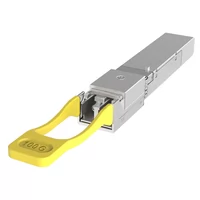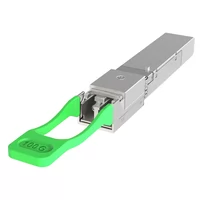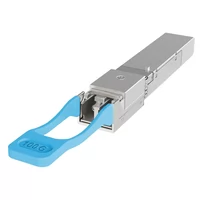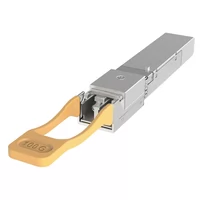With the increasing data requirements, the call for faster and broader methods is more than ever. Among the new ideas in this area of technology is SFP-DD (Small Form-Factor Pluggable Double Density). This article will cover all there is to know about SF/DD, including its design, benefits that come with using it, and possible applications. Having read through this text, people should be able to appreciate what SFPDD can do for network structures and data hubs; not only does it provide a foundation upon which connections can be made, but it also greatly improves how information is managed within such systems, thereby revolutionizing them forever.
Table of Contents
ToggleWhat is SFP-DD and How Does it Enhance sfp-dd?
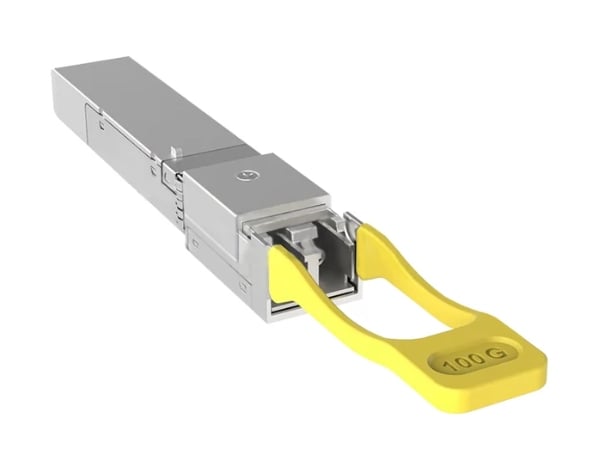
Understanding the Double Density sfp-dd Form Factor
SFP-DD, or Small Form-Factor Pluggable Double Density, is a next-gen form factor that doubles the number of interfaces for high speed in network equipment with the same physical size as its predecessor, the SFP form factor. This allows for higher bandwidth and data throughput within space constraints by increasing port density through design compactness. This is especially important today when it comes to data centers and other such places where scalability matters just as much, if not more, than being efficient with space usage alone. These devices have two channels that support up to 100 Gigabits per second (Gbps) per module each; therefore, they are the perfect solution for future networks.
Comparing SFP-DD to Traditional sfp Form Factors
Port density and data throughput are what set SFP-DD apart from traditional SFP form factors. Traditionally, SFP modules can only handle data rates of 25 Gbps per channel, but with its dual-channel architecture, SFP-DD can support up to 100 Gbps. This means that within the same space, sfp-dd doubles the interface density thereby greatly increasing bandwidth as well as network efficiency without necessitating more room in network devices. Furthermore, backward compatibility of sfp-dd with current sfp ports streamlines migration so that they can easily blend into present networks even as they ready themselves for future technologies.
Benefits of Upgrading to sfp-dd Transceivers
Switching to SFP-DD transceivers offers numerous advantages that correspond with the latest technological improvements:
- Better Bandwidth and Speed: SFP-DD transceivers can support up to 100 Gbps and provide higher data throughput rates to cater to bandwidth-intensive applications.
- Increased Port Density: By doubling the interface density in the same physical space through dual-channel architecture, SFP-DD transceivers become an ideal choice where space utilization matters most, such as in data centers and high-performance computing networks.
- Backward Compatibility: SFP-DD modules are designed to work with existing sfp infrastructure, thus making it possible to have a smooth transition at a lower cost. This protects investments already made on network hardware while allowing future scalability.
- Reduced Power Consumption: Energy savings are key in designing SFP-DD transceivers, which help cut down overall power usage. Not only does this lead to cheaper operations, but it also lowers the carbon footprint, as required by sustainable practices within data centers.
- Better Network Performance: Upgrading to SFP-DD greatly improves network performance due to its increased capability of handling more data traffic and reduced latency periods. Such features are critical for cloud computing, video streaming, or large-scale data analytics applications that require high-performance networking solutions.
These benefits highlight why it’s strategic to adopt sfp-dd transceivers as part of upgrading current systems to meet future communication infrastructure needs.
How to Install an sfp-dd Transceiver
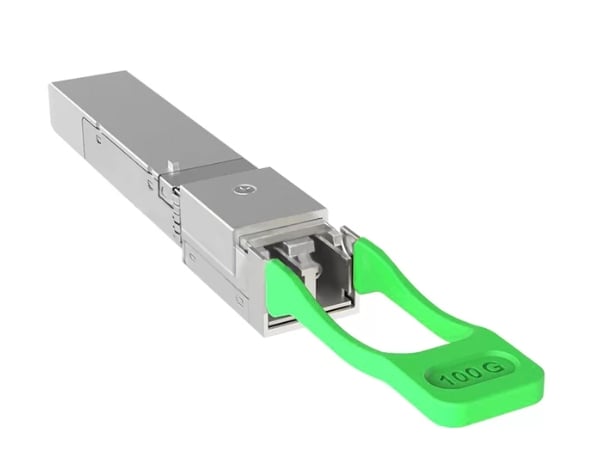
Tools and Materials Needed for Installing an sfp-dd Transceiver
- ESD Wrist Strap: An absolute necessity when it comes to earthing oneself so as to avoid electrostatic discharges that could damage the transceiver or other delicate parts.
- Small Phillips Screwdriver: Use this tool to fasten any mounting brackets or enclosures that house the transceiver.
- Lint-Free Cloth and Isopropyl Alcohol are a must-have during the cleaning process of the slot on the SFP-DD transceiver.: Clean the transceiver and connection points so no contaminants would affect its performance.
- Fiber Optic Cleaning Kit: These tools are highly specialized in cleaning fiber connectors for optimal signal transmission.
- SFP-DD Transceiver Module: This is the unit/component of an SFP-DD transceiver that will be installed in a network device.
- Network Device with SFP-DD Port: A router, switch, or any other networking hardware with an SFP-DD port where you can insert this transceiver.
- Optical Fiber Cable: This fiber optic cable matches the required transmission distance and data rate for connecting to this transceiver.
- Documentation: The manufacturer’s installation guide and technical specifications are meant for reference during installation.
These words express that using those materials and being careful with them guarantees the successful installation of SFPDD Transceivers while improving network reliability and performance.
Step-by-step Guide to Installing SFP-DD Transceivers
- Make Sure To Ground Yourself: Attach the ESD wrist strap to ground yourself properly, thus avoiding electrostatic discharge, which can damage transceivers and other parts.
- Turn Off The Network Device: Before inserting the transceiver, switch off the network device to ensure that no electrical problems occur.
- Clean Transceivers and Ports: Clean the SFP-DD transceiver and network devices’ ports with a lint-free cloth soaked in isopropyl alcohol; this will help remove any dust or foreign materials that may affect performance.
- Verify Alignment: Carefully align an SFP-DD module onto the corresponding network equipment port, ensuring correct orientation while matching configurations between them.
- Place It Into An SFP-DD Transceiver Slot.: Push gently until there’s an audible click sound made by these modules when they get into their proper places. Excessive force should be avoided because it can break connectors, among other things.
- Secure the Transceiver: If necessary, use the brackets provided to fix them properly so they sit within the key slot on an SFP-DD. Otherwise, ignore this step, but do not let them fall out accidentally during the operation.
- Join Fiber Optic Cables Together: Connect the appropriate optical fiber cable to each end of a transceiver, making sure that the cable meets the required transmission distance and data rate specifications.
- Power On The Network Device: Switching ON is done after plugging in securely then only you should connect cables.
- Confirm If Installed Correctly: Check the manufacturer’s guidebook for confirmation whether the installation has been done right; also, have a look at connectivity light indicators plus running tests to know if everything was correctly fixed or not.
- Watch Over Performance Levels Post Installation: Monitor how healthy networks perform after this service provision has been carried out. Where necessary, follow the manufacturer’s instructions.
Common Installation Issues and How to Avoid Them
- Module Orientation Error: The most typical problem during installation is putting the transceiver module in the wrong orientation. Always check if the module is inserted properly and aligned with the port. For the correct direction, refer to the device document.
- Dirty or Contaminated Connectors: Performance can be severely affected when there is dust or other contaminants on any part of modules and fiber-optic connectors. Always ensure that they are cleaned using suitable tools for cleaning fiber optics before you connect your transceivers with them.
- Excessive Force During Insertion: When inserting a module into its slot, one should not apply much pressure; otherwise, this may lead to damage to the transceiver itself or the network device ports involved. The right way is gentle pushing until it clicks into place, but never use too much force; if resistance occurs, then realign and clean up connector surfaces again.
- Improper Cable Connection: If an optical fiber cable type is wrong or connected wrongly, it could result in poor performance across networks or none at all. You need to make sure that you have matched the transmission distance and data rate specifications indicated on each transceiver’s label with those provided by the respective cables used, plus check whether they are firmly fixed together.
- Firmware/Compatibility Problems: In some cases, a given transceiver might not work well with the firmware version installed on network devices, and compatibility issues can arise from time to time. Before putting everything in place, always confirm its compatibility status, then update the device’s firmware if need be. Also, cross-reference the manufacturer’s matrix concerning this matter so that no problem occurs.
These are just a few of the many possible mistakes made while installing SFP-DD interfaces. However, by being proactive about addressing these common problems during the setup phase, one can expect a better experience throughout their usage period while maintaining peak performance levels across various networks.
Understanding 100g Capabilities of sfp-dd
Maximum Data Rates and Bandwidth Requirements
The 100G abilities of SFP-DD (small form-factor pluggable—double density) transceivers represent important improvements in rates and bandwidth, which are compatible with SFP transceivers. These modules were designed to support data rates up to 100 Gbps per channel, which satisfies the requirements set by modern data centers and high-performance computing environments. A double-density interface can allow for configurations with higher port densities, effectively enabling twice as many connections as standard SFP transceivers.
Network performance is directly affected by bandwidth requirements. Consequently, it is necessary to use good quality optical fiber cables with low signal attenuation and high signal integrity, mainly single-mode fibers (SMFs), for long-range applications of up to 10 km where an increased data rate has been adopted. Furthermore, these transceivers follow such industry standards as IEEE 802.3 or MSA (Multi-Source Agreement) specifications so that they will work with various devices across different network infrastructures. Enterprises can achieve solid and scalable networking solutions if they take advantage of better bandwidth capabilities and faster speeds provided by 100G SFP-DD transceivers.
How SFP-DD Supports 100g Ethernet
To support 100G Ethernet, SFP-DD (Small Form Factor Pluggable – Double Density) transceivers double the port density and increase data transmission capacity. With a two-lane electrical interface, these transceivers can reach 100 Gbps data rates while staying small. This means it takes up less space for the cabling system in a data center, providing greater bandwidth availability and better network efficiency. It also has a hot-swappable feature and complies with IEEE 802.3cd 100GBASE standards that guarantee its reliable performance and interoperability with existing Ethernet infrastructures. Network operators can achieve much higher data throughput and lower latency by using SFP-DD technology, which is necessary for high-performance computing or any other type of data-intensive application.
Achieving Optimal Performance with 100G SFP-DD Transceivers
In order to achieve the best results using 100G SFP-DD transceivers, one must take into account several important considerations. First and foremost among these is ensuring that fiber optic cable management is done correctly – using higher quality cables can help reduce signal loss over distance while maintaining data integrity. Secondly, it may be necessary for network operators to employ advanced diagnostic tools so as not only to detect problems but also to fix them as quickly as possible, thereby keeping performance levels consistent throughout. Keeping firmware up-to-date regularly together with following manufacture guidelines also play a critical role in terms of making sure transceivers work optimally and keep pace with evolving network standards, besides deploying them in controlled environments with suitable cooling systems, which greatly lowers the chances of overheating hence prolonging their lifespan too. All these measures are aimed at enabling organizations to maximize the efficiency and reliability of their 100G Ethernet networks.
Compatibility: sfp-dd vs. SFP and SFP+
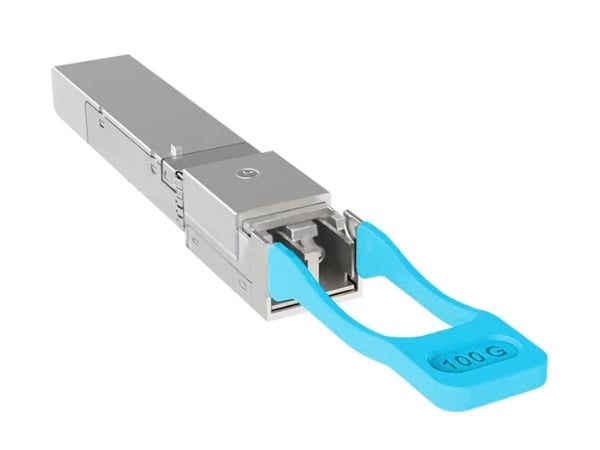
Interfacing SFP-DD with Legacy sfp Systems
For interfacing SFP-DD transceivers with legacy SFP systems, it is necessary to know the main compatibility issues and appropriate adaptation techniques. However, backward compatibility with traditional SFP and SFP+ ports is only partially retained by dual-channel type modules represented by SFP-DD. In order to connect them seamlessly, network operators usually apply either breakout cables – splitting the dual channels into individual SFP connections or adapters that bridge the specific pin configurations and power requirements between the SFP-DD and legacy SFP systems.
One has to check whether the current infrastructure supports the power delivery needed for the functioning of these modules. Moreover, signal integrity and data consistency throughout mixed-interface setup should be tested extensively too. The use of high-performance cables, connectors, and compliance with standards given by manufacturers can further improve interoperability between SFP-DD and legacy SFP systems. Finally, suppose the integration process is planned thoroughly and carried out carefully. In that case, network operators will be able not only to utilize the advantages offered by SFP-DD technology but also to keep their existing sfp-based networks functional.
Backward Compatibility and Adaptation
Some things need to be done to make SFP-DD compatible with older systems and make them adapt to each other. One of these is that SFP-DD modules are made in such a way that they will work together with the earlier versions of SFP transceivers but may have reduced performance. A typical method of ensuring this compatibility includes using breakout cables that change over the dual channels of an SFP-DD module into individual SFP or SFP+ connections. Additionally, specialized adapters or transceivers could be used in order to cover the pin configuration and power specifications between an SFP DD and a legacy system.
In addition, it is important to verify all aspects concerning power delivery capabilities within a network as required by modules of type DD. The alignment should also be correct on the main slot found on any given component labeled as such. For different interfaces, the integrity of signals needs enough testing and validation, not forgetting about data transmission quality necessary for uniformity in performance across mixed interfaces. Maximum reliability and efficiency can be achieved if operators follow manufacturer guidelines while using high-quality cables within their networks. Structuring integration processes will enable one to utilize sfpdd effectively alongside existing sfp infrastructure by following a logical approach throughout the integration stages.
Future-proofing Your Network with SFP-DD
To future-proof your system with SFP-DD technology, strategic planning and execution are needed, which ensures compatibility between the infrastructure and SFP as well as SFP-DD transceivers. The first step is identifying areas in the current network where performance can be improved by using SFP-DDs. Such an assessment should involve evaluating things like bandwidth needs, power requirements, and whether or not they are compatible with existing systems. Purchase high-quality SFP-DD components that meet required technical standards and provide consistent performance over time.
Take an incremental approach during upgrading; start with critical parts of a network that would benefit more from increased speeds and better efficiency. Extensive testing at every level is essential so as not to compromise signal integrity or the quality of data transmission. More advanced monitoring tools should be integrated to track performance metrics and detect potential problems early.
Stay updated about industry developments that are likely to affect your organization’s future needs to keep pace with changes in SFP-DD technology. It is important to work closely with reputable suppliers while following proven methods during deployment to realize a strong, scalable network capable of supporting emerging applications and technologies.
SFP-DD in Data Centers: Enhancing sfp-dd Network Infrastructure
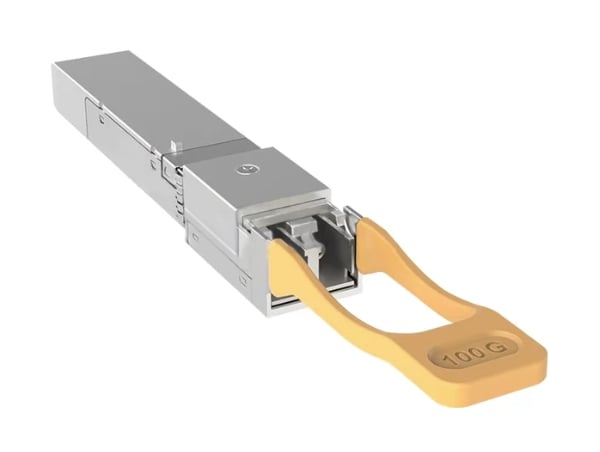
Role of SFP-DD in High-speed Data Centers
SFP-DD (double-density pluggable small form factor) is crucial to contemporary high-speed data centers since it doubles the density and speed of traditional SFP ports. Utilizing developments in optical transceiver technology, SFP-DD transceivers reach data rates of up to 400Gbps, which significantly improves bandwidth and overall network capacity within the same physical space. This is important for data centers that deal with more significant amounts of information coming from big data analytics, cloud computing, and IoT applications. The backward compatibility of SFP-DD with existing SFP, as well as SFP+ modules, ensures smooth network upgrades, thereby guaranteeing cost-efficient scalability and utilization of current infrastructures. Data centers can also integrate SFP-DD technology to meet future performance requirements while optimizing space and retaining operational efficiency at peak levels.
Increasing Port Density and Efficiency
There’s nothing more important than upping port density and efficiency in data centers to deal with the rising need for higher bandwidth. SFP-DD transceivers tackle this problem by doubling switch and server ports, using what we already have most effectively without needing more space physically. Also, it is said that SFP-DD technology solves space constraints and cuts power use per gigabit, making operations energy-saving based on influential industry sources. Besides making it easier to upgrade networks without disrupting them too much or losing performance because they can be used together with old and new systems, these modules offer modularity and backward compatibility that ensure smooth transitions from legacy systems to more advanced setups. The ability of data centers equipped with SFP-DDs to process larger amounts of data traffic increases their capacity for supporting high-speed applications, which are becoming more common nowadays.
Optimizing Data Center Operations with SFP-DD
To improve data center operations, it is necessary to use the superior abilities of SFP-DD to fulfill increasing performance needs. The additional port density of SFP-DD allows for better rack space utilization, creating a more dense and scalable infrastructure. More so, this technology has great power efficiency with its ability to reduce power consumption per bit, thus lowering overall operational costs. This module is also backward compatible with other existing modules, making integration easy and reducing the time wasted during upgrades while maintaining service continuity. Data centers can achieve higher throughput rates, lower latency periods, and improved reliability when they support modern digital applications and services using SFP-DDs.
Reference Sources
Frequently Asked Questions (FAQs)
Q: What is SFP-DD and why is it considered the future of optical transceiver technology?
A: SFP_DD stands for Small Form-Factor Pluggable Double Density. It is a transceiver module that follows next-generation standards to enable faster data rates and increased port density. Compared to traditional SFP modules, it has twice as many electrical interfaces, making it a key enabler for high-speed networking in the future.
Q: How does the SFP-DD module differ from the standard SFP module?
A: The SFP-DD module supports higher data rates than standard ones; it can achieve up to 112 Gbps NRZ or 112 Gbps PAM4 modulation. Additionally, its port density is also enhanced compared with conventional modules since it features a double-density design that allows more electrical interfaces, thereby enhancing the performance and capacity of data networks.
Q: Are SFP-DD modules compatible with existing SFP and SFP+ systems?
A: Yes, they are backward compatible with these interfaces. This means organizations can utilize them within their current infrastructure thus simplifying system upgrades without having to replace all hardware components.
Q: What should be done when handling an SFP-DD transceiver for proper installation and maintenance?
A: Always ensure the cleanliness of the transceiver while avoiding any contamination of its port. Insert the transceiver into the port by pushing it correctly oriented, and keep the dust cap on if not being used, especially if it is used with sfp-dd interfaces. During installation, cables should be inserted into the transceiver first before being installed into the port.
Q: What are the specifications of an electrical interface on an sfp-dd?
A: The electrical interface of an sfp-dd supports high-speed signaling for both NRZ (Non-Return to Zero) and PAM4 (Pulse Amplitude Modulation) data formats with speeds up to 112Gbps.The double-density design ensures greater capacity and higher performance.
Q: What do I need to do if the transceiver doesn’t easily slip into the port?
A: If it does not slide in easily, don’t force it. Ensure that the transceiver pull tab is correctly placed and that the transceiver is oriented correctly. Check for debris or damage on the transceiver or in the port before attempting to reinsert.
Q: Explain MSA specification and its importance for SFP-DD modules.
A: MSA (Multi-Source Agreement) refers to an industry-wide collaboration to develop standards for transceivers such as SFP-DD regarding form factor and electrical interface, among other things. These standards ensure that products from different manufacturers can work together, thus improving interoperability and ease of deployment.
Q: How do SFP-DD ports improve network infrastructure scalability?
A: These ports make higher data transmission rates possible, thereby doubling connections per physical space. This translates into better utilization of space and resources within data centers, leading to increased scalability in network design options.
Q: What are some recommended ways of maintaining SFP-DD transceivers?
A: Always keep dust caps on when not in use to prevent contaminants from entering. Handle them carefully without touching connector ends, and clean them regularly for peak performance over time.
Q: Can I use SFP-DD modules for point-to-point connections?
A: Yes, they can be used. They are typically known as “SFP-DD to SFP-DD” connections and are mostly employed where high-speed data transfer between network devices is needed. These connections are characterized by improved performance levels coupled with reliability.
Related Products:
-
 SFP-DD-100G-DR 100G SFP56-DD Single Lambda DR 1310nm 500m LC SMF with FEC DDM Optical Transceiver
$345.00
SFP-DD-100G-DR 100G SFP56-DD Single Lambda DR 1310nm 500m LC SMF with FEC DDM Optical Transceiver
$345.00
-
 SFP-DD-100G-FR 100G SFP56-DD FR Single Lambda 1310nm 2km LC SMF with FEC DDM Optical Transceiver
$399.00
SFP-DD-100G-FR 100G SFP56-DD FR Single Lambda 1310nm 2km LC SMF with FEC DDM Optical Transceiver
$399.00
-
 SFP-DD-100G-LR 100G SFP56-DD LR Single Lambda 1310nm 10km LC SMF with FEC DDM Optical Transceiver
$443.00
SFP-DD-100G-LR 100G SFP56-DD LR Single Lambda 1310nm 10km LC SMF with FEC DDM Optical Transceiver
$443.00
-
 SFP-DD-100G-ER 100G SFP56-DD ER Single Lambda 1310nm 40km LC SMF with FEC DDM Optical Transceiver
$1699.00
SFP-DD-100G-ER 100G SFP56-DD ER Single Lambda 1310nm 40km LC SMF with FEC DDM Optical Transceiver
$1699.00

